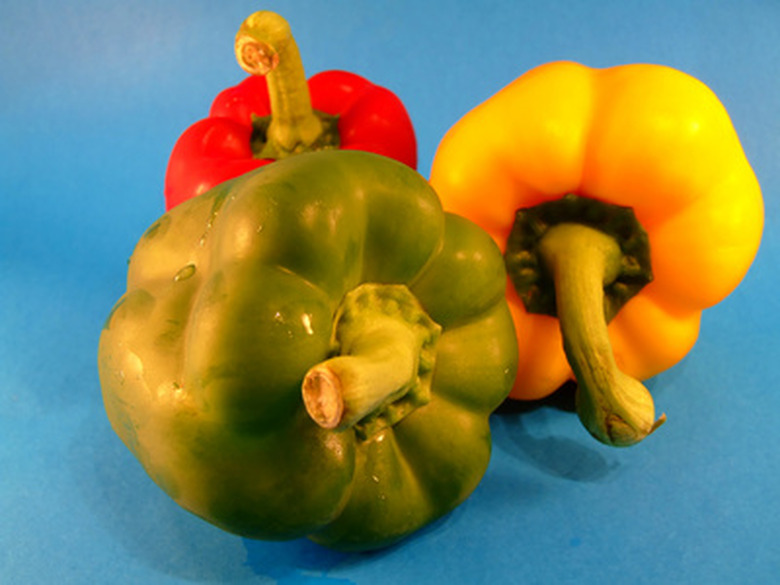How To Prune Bell Pepper Plants
Best known for their large, blocky green peppers diced or sliced as seasoning for Italian or Mexican cuisine, bell peppers also grace the table in green garden salads or grilled up with savory sausage for a delicious treat. This versatile vegetable matures to bright red, orange or yellow with many hybrids available to add color and variety to any meal. Grown in the home garden, peppers require relatively little care other than watering, fertilizing and occasional pruning.
Step 1
Prune or pinch back pepper plants when seedlings reach 4 inches in height. Squeeze the center leaves between your thumb and forefinger to remove them from the stem. This encourages the plant to send out side shoots and develop dense, compact growth.
Step 2
Remove the first flush of blooms by pinching or pruning them from the stem. Under optimal growing conditions, this is not required. Plants that grow in less than optimal conditions (such as poor or dry soil) often benefit from the removal of blooms or buds, as this forces the pepper plant to produce a new flush of blooms and increases overall fruit yield.
- Best known for their large, blocky green peppers diced or sliced as seasoning for Italian or Mexican cuisine, bell peppers also grace the table in green garden salads or grilled up with savory sausage for a delicious treat.
- Plants that grow in less than optimal conditions (such as poor or dry soil) often benefit from the removal of blooms or buds, as this forces the pepper plant to produce a new flush of blooms and increases overall fruit yield.
Step 3
Prune back pepper plants by several inches after fruiting ceases to encourage the plant to re-bloom and set additional fruit. Although Northern climates do not have a long enough growing season to produce two crops of peppers, tropical or warm climates in Southern areas often benefit from a midsummer pruning and enjoy a second crop.
Bell Pepper Plants In Pots
Bell pepper plants need a pot that will hold at least 2 gallons of potting soil. The Container should have several drainage holes in the bottom. Self-watering pots are a good choice for bell peppers, as they need a lot of water. You can always remove it later if it isn't needed. Transplant seedlings into the center of the pot when the soil temperature is consistently above 70 F. If the soil temperatures are too cool, the plant will not grow and the first flowers may drop off without producing fruit. Protect young pepper plants from unexpected drops in temperature by placing a hot cap or clear plastic container over the pot. Remove the cover when the first flowers appear. Bell pepper plants need heat and lots of sun.
- Prune back pepper plants by several inches after fruiting ceases to encourage the plant to re-bloom and set additional fruit.
- Transplant seedlings into the center of the pot when the soil temperature is consistently above 70 F. If the soil temperatures are too cool, the plant will not grow and the first flowers may drop off without producing fruit.
Things Needed
- Pepper seedlings
- Clippers/knife
References
- TAMU Extension: Pepper
- OSU Extension: Garden Hints
- The Vegetable Gardener's Container Bible; Edward C. Smith
- Vegetable Gardening; Fern Marshall Bradley
- Burpee Complete Gardener; Allan Armitage
- AZ Master Gardener's Manual: Container Garden
